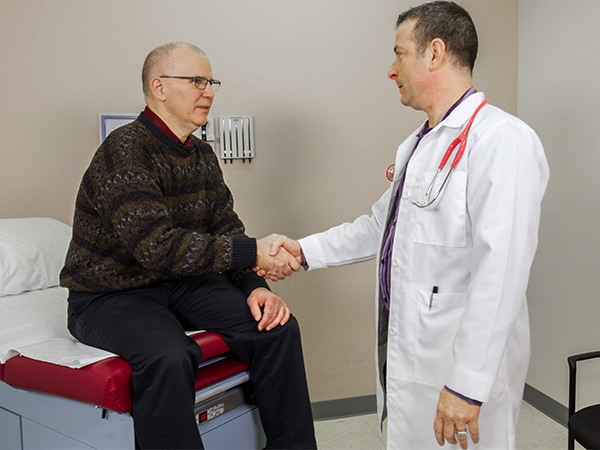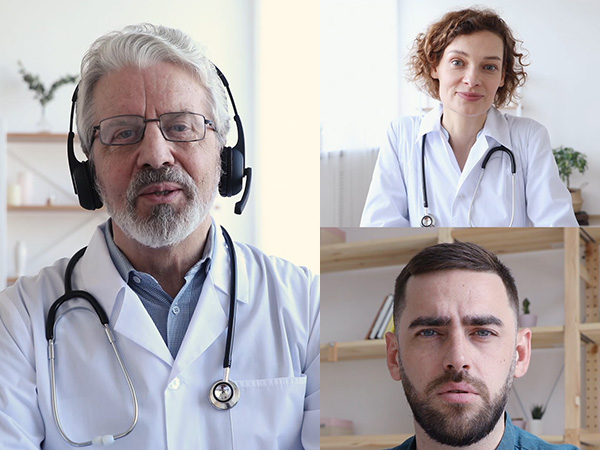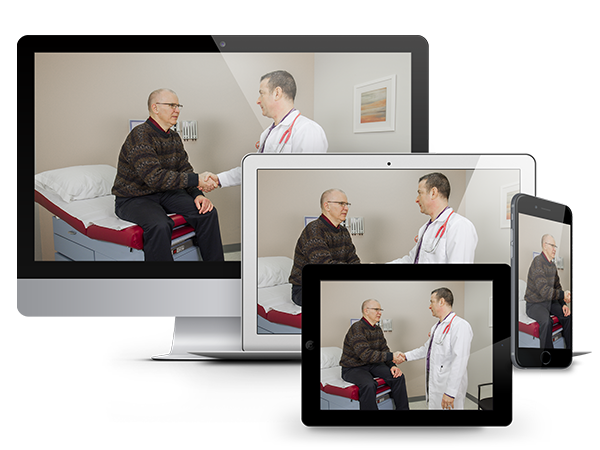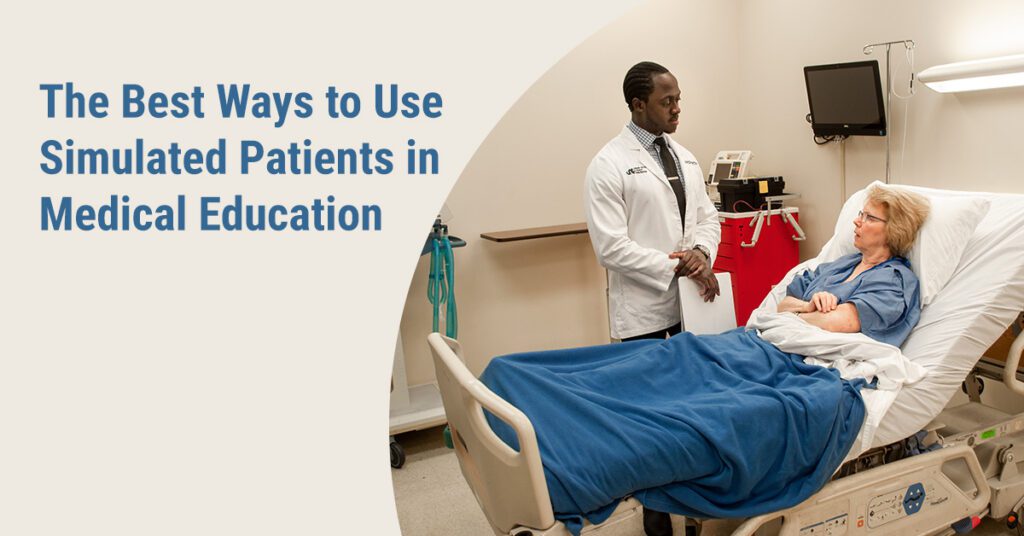Modern healthcare educators depend on a variety of methodologies to train the next generation of clinical practitioners, including online, didactic, and hands-on, simulation-based training using manikins and simulated patients in medical education (also referred to as standardized patients or SPs).
Simulated patients are taught to portray a patient with a particular medical condition in a realistic, standardized, and repeatable way—and over the past 50 years, they have become an essential aspect of healthcare education. Widely used for formative assessments during objective structured clinical exams, simulated patients effectively train healthcare learners across a wide array of disciplines, including medical, nursing, physical therapy, and behavioral therapy.
Medical education programs value SPs and simulated patient scenarios for their incredible flexibility throughout the training curricula. Not only can administrators deploy high-quality SPs over a broad range of simulation scenarios, but also more deeply engage learners and improve their clinical, interpersonal, and team-based care delivery skills.
Studies have shown that students demonstrate deeper and more complex emotional and communication skills after simulated patient training activities are completed. By developing and maintaining a strong standardized patient program, institutions can be confident that they’re helping learners develop the aptitudes they need to succeed in real clinical environments

Read on to discover the best ways to optimize your standardized patient training program, as well as how to adapt your simulated patient training to rapidly changing learning environments and delivery infrastructures.
Diversity Matters in SP Selection
Many simulation training programs recruit for their standardized patient pools through local theater groups, retirees, college students, or current and former healthcare workers. But instead of focusing on the “where,” administrators should be more concerned with the “who” of SP selection.
Simply put, diversity matters. SP programs should aim to create the most realistic learning environment possible, assist students in identifying and overcoming implicit biases during their evaluations, and maximize the learning of future practitioners by making sure to select a standardized patient pool that is representative of a wide range of demographics.
A diverse SP pool should consist of individuals representing different ethnic, racial, and age groups as well as a mix of socioeconomic and educational backgrounds. In addition, recruiting non-English speakers will challenge learners with communication situations they will often face during real-life caregiving scenarios.

Training for Simulated Patients in Medical Education
Once a diverse pool of simulated patients in medical education is established, administrators should focus on ongoing training that prepares SPs to perform duties in three distinct areas: portraying roles, providing learner feedback, and completing assessments. By concentrating on distinct instructional techniques for each of these areas, educators can bolster SP performance and improve learning outcomes for students. And when simulated patient encounters can be standardized and successfully replicated, there are significant cost and time savings that can help boost program efficiency.
Healthcare educators training SPs should also focus on consistency, realism, and continuing education in simulated patient role portrayal. Consistency and accuracy are critical components for simulated patients in medical education as they have a direct correlation to student performance evaluations. Plus, incorporating more realism and authenticity in SP OSCE encounters (either through the SP encounter itself or through a realistic testing environment) may help elicit more authentic reactions from learners.
Enhance SP Training and Quality Assurance
Identify variables & gaps in understanding – take the time to understand where there might be gaps in the training, understanding of the material, and/or execution. Attention to detail is critical. What may seem minor during the SP onboarding phase, may prove to be an important factor that contributes to the learner’s clinical reasoning process.
Develop explicit strategies and tools to address these variables & gaps – put a standardized process in place that enables you to address each of these areas as necessary. Take the extra time up front to establish this and you’ll set yourself up for ongoing success. Plus down the line as resources inevitably rollover, you’ll have a structure in place that makes those types of transitions easier to handle.
Build in ongoing quality assurance protocols & support – make sure you have repeatable protocols in place to ensure training is being administered and consumed in the most effective ways possible and aligned with the strategies you have developed. You took the time to put those processes in place, as such it also makes sense to take the time to evaluate and course correct as needed.

Role Portrayal for Simulated Patients in Medical Education
Simulated patients in medical education are frequently called upon to participate in roles that can be physically and emotionally taxing – an SP may portray someone with a simple illness one day, a disgruntled spouse the next, and a surgical candidate the next – training staff should set up communication systems that provide opportunities for standardized patients to “check-in.” These check-ins help ascertain SPs’ psychological safety on an ongoing basis and can help identify when there is a mismatch in role assignment.
Because of the wide array of simulation scenarios that require individualized or case-specific training, administrators must provide continuing SP education after recruitment to ensure their understanding of evolving case content and course objectives. This ongoing SP/faculty collaboration helps ensure standardized patients are performing at a high level and faculty are presenting clear and achievable learner objectives.
Feedback and Assessment Training for Simulated Patient Scenarios
A standardized patient’s ability to provide feedback to learners is critical. Learners’ interactions with SPs help them develop interpersonal communication skills because simulated patients in medical education provide unique training information a medical or nursing learner can’t receive in any other healthcare education scenario.
Simulated patients who are effectively trained to communicate how learners’ actions and words affected their emotional experience, understanding of the information communicated to them, and their trust in the student, can give learners valuable insights to use in future patient interactions. With additional training, SPs may even be able to provide feedback and assessment on clinical skills.
Simulated patients in medical education often need to pull double duty for their roles in simulation training. They must master being both an actor and an observer via their simulated patient training. To prepare for this dual responsibility, SP educators must have effective instructional plans, focusing on both functions, in place beforehand. This entails ensuring SPs participate in a broad range of scenarios as well as thoroughly familiarizing them with any assessment instruments or technology in use.

When using technology to access rubrics, checklists, or narrative feedback, SPs must be prepared to consistently and accurately enter learner and performance data within the applications provided. This will allow them to concentrate more fully on the content of their assessment and not the mechanics of entering it.
Technology to Enhance Simulated Patient Training
Administrators should be constantly evaluating new technologies they can leverage to expand their simulated patient pools and enhance training techniques. In addition to traditional simulation training platforms, emerging tech currently utilized in effective training for simulated patients in medical education includes:
- Video Management Platforms – with the video management incorporated directly into most simulation software suites, educators can develop SP training programs with on-demand courses and videos, slides, and on-screen content.
- SP Session Management and Scheduling – seamlessly provide SPs the ability to manage sessions and events from multiple devices, and also enable them to manage invitations to sessions and events, phone and email the scheduler, submit timesheets, and check-in and out of sessions.
- Live Streaming & Conferencing Capabilities – educators can eliminate geographic barriers for interviewing, qualifying, and debriefing simulated patients in medical education thereby increasing their reach for potential SP candidates and saving time and resources for large group training communications.
- Integrated Assessment Tools – many simulation training platforms enable educators to monitor simulated patients’ ongoing knowledge and retention with integrated quizzing capability, performance tracking, and the ability to award completion certificates for individual learners as well as cohorts.
- Companion apps – once SPs are ready to participate in simulations, administrators can use complementary mobile apps to schedule them for sessions and events, send reminders, submit timesheets, and check SPs in and out of facilities.

Simulated Patients in Medical Education for Today - And Tomorrow
The creation and ongoing maintenance of a successful simulated patient training program requires considerable time and effort. Fortunately, programs that can recruit a diverse pool of simulated patients in medical education, provide consistent training for role portrayal, feedback, and assessment, and leverage new technologies to assist their management and deployment efforts will be better able to prepare their learners for real-world clinical practice.
The future of patient safety starts with the proper training, which makes it imperative that institutions go above and beyond in doing their part to effectively prepare the healthcare practitioners of tomorrow. Well-maintained standardized patient training programs assist learners in reducing medical errors, expanding patient satisfaction, and increasing doctor-patient communication. In short, all goals well worth any investment.
What if you could forget about technology and allow your educators to focus on educating learners and running clinical simulation training activities with relative ease? To learn how EMS and its SIMULATIONiQ platforms can help you achieve your instructional goals for simulated patients in medical education, Schedule a Free Consultation with one of our training experts.

